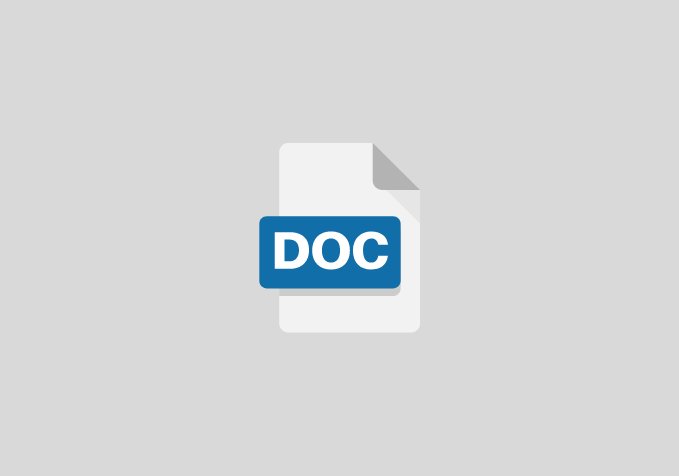Internal Audit as a Tools in Achieving Organizational Objectives.
Chapter One
OBJECTIVES OF STUDY
Internal audit is a tool, and a way in helping organization achieve their set goals or objectives. The main objectives of the study are as follows:
- To examine the effectiveness of internal audit in an organization.
- To show how internal audit assist in management operation.
- To show how organizational hierarchy has influenced internal audit department.
- To ascertain how internal audit department is a base in achieving value for money audit
CHAPTER TWO
REVIEW OF RELATED LITERATURE
DEFINITIONS
Management audit is a systematic examination of the systems, procedures, and management processes of the organization to determine the extent to which that are operating effectively in achieving the objectives of the organization and indicate where improvements are required. It is sometimes referred as “operation audit” and the process can be termed management auditing “operational auditing”.
According to professor Epstem, “the management audit is concerned with management appraisal, but in a context of evaluating management performance in totality.
While another author, Finch F. define it as “An audit of a company’s policies, objectives, techniques and processes, resulting in a set of conclusions on managerial effectiveness and efficiency, and recommendations on possible way of increasing performance and profitability Hano Yohannesen gave his definition as a systematic assessment of standards and techniques of management.
A very recent and professional qualified competent author, Caneson L., in his contribution to the accountancy professional magazine of ACCA of India, gave views as “an independent appraisal activity within the organization. For comprehensive and critical examination of process and functional area of management”.
The Internal Control Integrated Framework published by The Committee of Sponsoring Organizations (COSO) is the recognized standard for establishing internal controls. COSO defines internal control as:
“a process, effected by an entity’s board of directors, management and other personnel, designed to provide reasonable assurance regarding the achievement of objectives in the following categories:
- Effectiveness and efficiency of operations
- Reliability of Financial Reporting
- Compliance with applicable laws and objectives”
The first objective deals with the entity’s achievement of basic business objectives. The second refers to the reliability of financial information (both internal and external) that is used by decision makers. The third deals with complying with laws, regulations, and policies.
CHAPTER THREE
RESEARCH METHODOLOGY
INTRODUCTION
Research methodology is the process of collecting data for research projects.
This chapter describes the techniques and procedures used by the researcher in conducting the study and gathering the data for the study.
This research is designed to survey the application and the Internal Audit as a tool for achieving organizational objective. It includes the description of the population of the study, the sample size, sampling techniques, source of data, method of data collection and method of data analysis and testing hypothesis.
CHAPTER FOUR
DATA ANALYSIS AND INTERPRETATION
INTRODUCTION
This chapter will show presentation, analysis and the interpretation of data collected and the finding of the study out of eighteen questionnaires that were administered, only eighty were carefully completed and returned.
The data collected were analyzed in percentages. The questionnaire has two sections.
Section A contained five questions which deal with personal data of the respondents and section B contained the rest of the questions.
CHAPTER FIVE
SUMMARY, RECOMMENDATION AND CONCLUSION
SUMMARY OF THE STUDY
Internal Auditing has been seen as the independent appraisal activity with an organizations for the review of the accounting, financial and other operations as a basis for protective and constructive science to management. It is a type of control, which functions by measuring and evaluating the effectiveness of other types of control.
The study has revealed the following:
(a).The scope of duties of the internal Auditor and his staff which is limited in terms of independence and wide in other areas like operations. This is evidence by the fact that internal Auditors appointed by the management and is also disciplined by management.
(b). Staff is no competent enough due to their low qualifications. The staff does not have the opportunity to undergo orientation course before assigned duties.
(c).Though the internal auditors has no significant authority over the accounts and administration sections but he has a lot of responsibilities and he is independence to a considerable degree. The internal auditor can be seen to be favorably placed in the organization hierarchy.
(d).The conflict of interest among the managers used to jeopardize the activities of the internal Auditor this is because as the directors have opportunity to visit a branch of bank at any given time. And desire to know the activities of the bank; the managers want their interest to be protected.
(E). Unskilled employees/workers:
It was observed that those who are employed to do the accounting work have little or no skill in accounting work. Some were employed into section to protect the interest of one manager or the other. In a situation where someone read social science will be employed to perform the work of an accountant. It will render the financial records useless and the aim of external auditors will not be achieved.
REFERENCES
- Chamber, A. D. (2008): Internal Auditor: Theory and Practice, London pitman.
- Cook, et al (2005): Auditing philosophy and Techniques 4th Edition. Houghten Company. New York.
- Coper, V. R. (1997), Students manual of auditing, 2nd Edition, London, Gee and co, (Publishers) Limited.
- Cookey A .E (2003) , Research methods,1st Edition,Onitsha,Abbot Books Limited.
- De Paula (2007): The Principles of Auditing London 13th Edition
- Ene, L. (2007: A dictionary of Accountant 7th Edition. New Jersey Prentice Hall Inc
- Howard, L. R. (2003: Auditing principles and practice 11th Edition. Macdonald and Evans. London.


